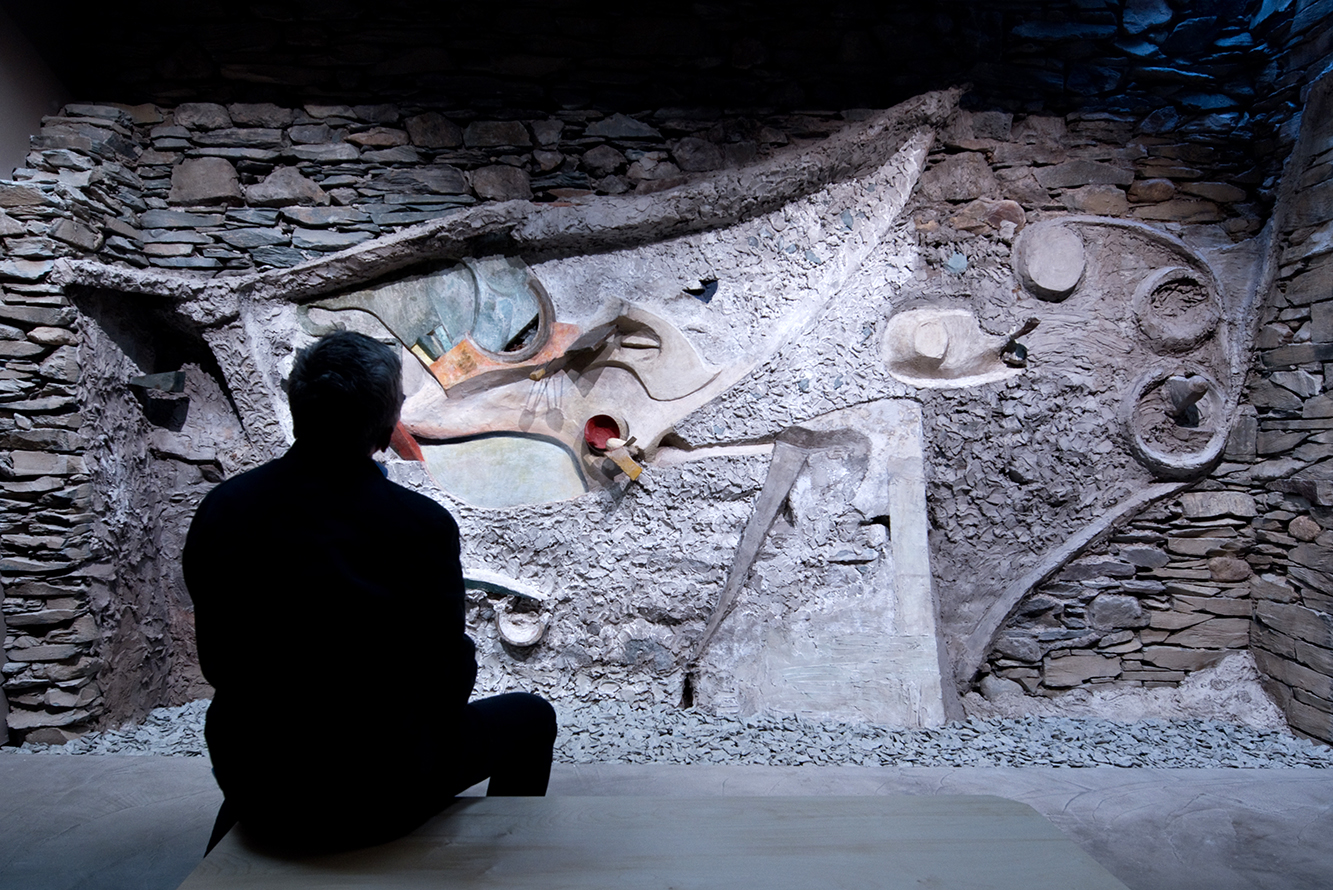Above: The Merzbarn in 1963. Photo Robert Smithies for The Guardian
Come and join me. I am sitting on a bench in a smallish, darkish place about the size of my sitting room at home. It’s very quiet – that distinctive art gallery quiet – quieter even than a library. To either side and behind us are featureless grey walls. In front of us is what can only be a work of art. It is big, the size of a wall. It is not a painting, though it is painted in places. It is not a sculpture, for while it has depth as well as height and width, I can’t see round it. Its surface heaves and swells out from the wall of the room, not far, but far enough to have a ‘behind’ and an ‘in front’ in places. Lines and ridges wave and swim across its surface, broadly tending towards the upper right, above which some daylight filters in. There must be a skylight. Mostly it seems to be made of plaster or something like that. Some places are rough and raw, some are smoothly finished and the paint has a slight gloss. Much of it is whitish or grey, and there are colours, some pale and muted, some spots of strong colour. Where the plaster stops, a rough stone wall is visible. In a couple of places I can see through the artwork to the stones behind it. Here and there are embedded things, mostly covered over and painted, a few recognisable as objects.

It is mysterious... because we will never know all its secrets.
Above: The Merz Barn Wall in the Hatton 2017, photo ©Colin Davison
We are looking at the Merz Barn Wall, the surviving remnant of the last large-scale work of Kurt Schwitters. He died working on this piece. What we are looking at is what remains of Schwitters’ final attempt to realise his vision of an all-embracing artwork. It is mysterious, because of its abstract nature, because so much of it is not present, because it hangs here in the gloom, because we will never know all its secrets.
